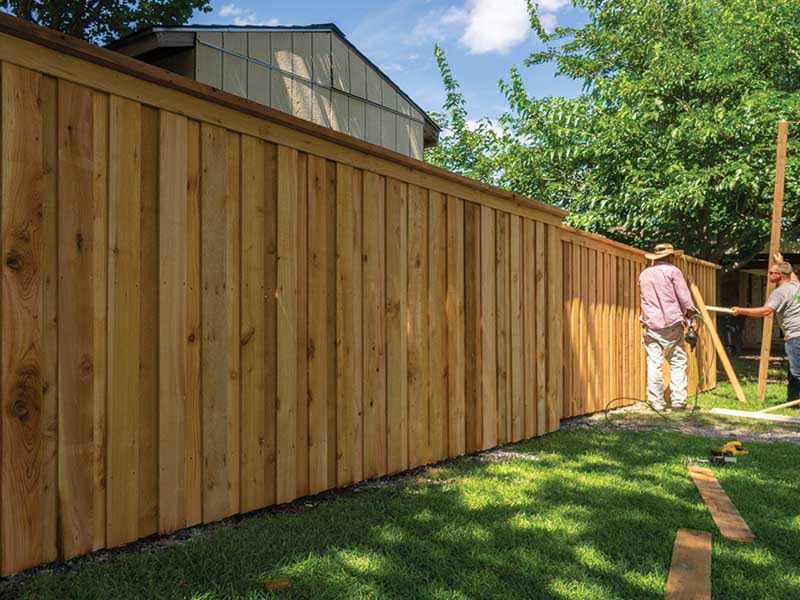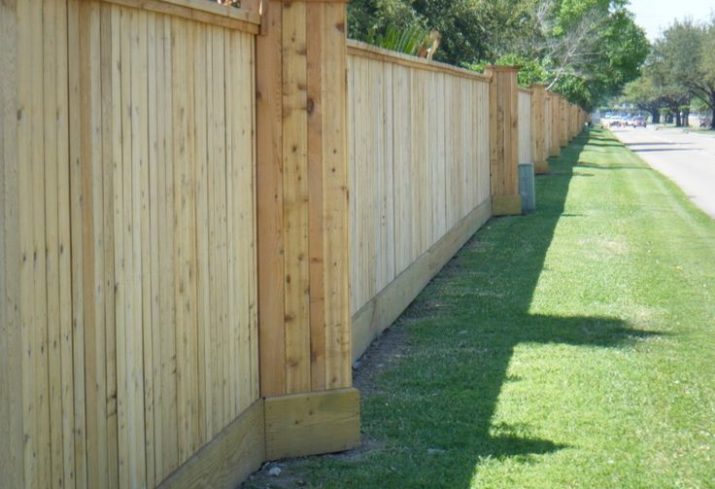Benefits of Working with an Qualified Fence Contractor
Benefits of Working with an Qualified Fence Contractor
Blog Article
Just How to Determine Common Concerns That Require Immediate Fencing Repair
When it pertains to keeping your fence, it is critical to identify issues before they come to be bigger troubles. Regularly inspecting for indicators of decaying timber, leaning panels, or rust can save you money and time in the lengthy run. You may not understand how climate and insects can endanger your fencing's integrity. Let's explore the common signs that show your fencing needs instant focus, so you can maintain your residential or commercial property secure and looking its ideal.
Indications of Rotting Timber in Wooden Fences
Have you seen your wooden fence looking a bit shabby? If so, it may be time to inspect for signs of decomposing wood. First, examine the base of the blog posts and panels for soft places. If you continue the timber and it really feels spongy or collapses, that's a clear indicator of rot. Next, try to find staining or dark areas on the timber-- these usually signal moisture damage. Take note of any peeling paint or surface, as this can expose the wood to more degeneration. In addition, a poignant, stuffy scent can show fungal development. Do not fail to remember to inspect links and joints; if they hang or falling apart, the wood under is likely endangered. By capturing these indications early, you can prevent much more comprehensive damage and maintain your fence standing solid. Regular maintenance is vital to extending the life of your wood fencing.
Leaning or Tilting Fence Panels
If you've seen your fencing panels tilting or leaning, it's vital to comprehend what caused it. This issue could indicate underlying architectural damage that requires your focus. Let's explore the typical causes and the fixing alternatives offered to get your fence back in shape.

Root Causes Of Leaning Panels
It's often an indication of underlying concerns that need dealing with when you see your fence panels turning or leaning. One typical reason is inadequate drain; excessive water can wear down the soil around the fence posts, damaging their support. One more perpetrator could be strong winds or tornados that press against the panels, specifically if they're not appropriately secured. Additionally, the all-natural settling of dirt with time can cause articles to change, bring about a tilt. Parasites, like termites, can compromise the integrity of wooden panels, creating them to lean. Bad installment methods might result in panels not being securely established, leaving them vulnerable to leaning under stress. Address these issues without delay to keep your fencing's integrity.
Indications of Structural Damage
Observing tilting or leaning fence panels can be disconcerting, as these problems often suggest structural damage that needs immediate attention. When your fence starts to lean, it might indicate that the articles are moving or that the dirt around them has actually eroded. Pay attention to gaps between panels or articles, as these can likewise suggest instability. deck builder. Furthermore, check for fractures or splintering in the wood, which can compromise the overall structure. If you discover rust or deterioration on steel components, it can compromise the honesty of the fence. Keep in mind, disregarding these indicators can bring about a lot more serious damages down the line, so it's important to evaluate the situation without delay and do something about it before it aggravates
Repair Service Options Available

Rust and Rust in Steel Fences
If you own a steel fence, you might notice rust and corrosion creeping in with time, especially if it's subjected to dampness. These issues not just influence the appearance of your fence however can additionally endanger its structural stability. To determine corrosion, search for reddish-brown places or spots, which indicate the steel is oxidizing. Corrosion can spread swiftly if left untreated, leading and deteriorating the fencing to costly repairs.To deal with corrosion and deterioration, you must cleanse the affected areas with sites a cable brush and use a rust-inhibiting guide. Once the primer dries, take into consideration repainting the fencing with a weather-resistant paint to protect it even more. Routine upkeep, such as checking for indicators of rust and retouching paint as required, will certainly aid extend your fence's life expectancy. Dealing with these problems immediately assures your steel fence remains strong and visually appealing for years to come.
Fractures and Divides in Vinyl Fencing

Reasons of Vinyl Damages
Plastic secure fencing is preferred for its longevity, yet it can still struggle with splits and splits due to various factors. One significant reason is severe temperature level variations. When vinyl broadens in the warm and contracts in the cool, it can weaken the material in time. Additionally, exposure to harsh sunlight can cause UV deterioration, making the plastic brittle. Physical influences, like hefty branches or unexpected collisions, can also produce fractures. Poor setup or using low-quality materials can exacerbate these issues. In addition, age contributes; older plastic fence is much more susceptible to damage. Routine evaluations can assist you recognize these elements prior to they result in considerable troubles. Take proactive measures to guarantee your fence continues to be strong and undamaged.
Repairing Cracks Successfully
Although splits and divides in your plastic fence can be worrying, resolving them immediately can protect against more damages and preserve the fence's look. Assess the dimension of the split. For tiny cracks, a plastic repair work package commonly includes adhesive that can bond the sides, offering a smooth repair. Clean the location completely prior to applying the adhesive, guaranteeing it adheres effectively. For bigger splits, you may require to make use of a vinyl spot. Cut the patch to dimension, apply glue around the sides, and press it firmly onto the split. Permit it to treat according to the manufacturer's directions. Routine maintenance and fast repairs can expand your fence's life expectancy, maintaining it looking great for several years to come.
Loosened or Missing Out On Fence Posts
Loosened or absent fence blog posts can undermine the security of your entire fencing framework. It's vital to attend to the concern instantly if you discover any articles leaning or tottering. Look for any kind of signs of motion, as this can cause more damages gradually. You can quickly analyze the problem by offering each article a mild shake-- if it feels unpredictable, it's time to take action.For missing out on blog posts, you'll require to replace them as quickly as feasible to keep your fence's honesty. When you mount new posts, see to it they're securely anchored in the ground with concrete or gravel for included security. If a message is loose, tighten it by including extra assistance or driving it deeper into the ground.Ignoring these issues can bring about larger problems, like voids in your fencing or also full collapse. Keep an eye on your articles and stay proactive regarding repair work!
Damages From Weather Condition and Natural Components
Climate and natural environments can ruin your fencing, resulting in you can try this out various forms of damages that call for prompt interest. Heavy rain can create wood to rot, making it weak and unpredictable. Snow build-up could bend or break panels, while solid winds can root out fence articles or create sections to lean.If you discover cracks or splintering in wooden fencings, it signifies drying out as a result of extreme sunlight exposure. Steel fencings can rust if protective finishes put on off, particularly in moist or seaside areas.Inspect your fence regularly after storms or extreme weather condition to catch any kind of damages early. Attending to these problems promptly can conserve you from expensive repairs down the line. Don't wait until a small problem becomes a significant one; remain aggressive and maintain your surround top shape to maintain both functionality and curb allure.
Parasite Problem and Termite Damage
It's important to act rapidly to avoid further destruction when you see indicators of parasite invasion or termite damage. Search for mud tubes along your fence or hollow-sounding timber, as these suggest termites are at job. You could likewise see small openings or frass, which is termite droppings appearing like sawdust. If you detect any one of these indications, it's time to evaluate the damage.Don' t wait until it's far too late; parasites can jeopardize your fencing's stability. Examine the surrounding area for beetles or ants, as they might be adding to the issue. If you think an infestation, consider contacting a pest control specialist to deal with the issue.repairing and validate or changing afflicted areas of your fencing quickly not only recovers its stamina but additionally avoids pests from spreading out additionally. Stay cautious to keep your building pest-free and protected.
Often Asked Inquiries
Just how Usually Should I Check My Fencing for Damage?
You must examine your fencing at least twice a year, preferably during spring and autumn. Regular checks aid you find damages early, saving you time and cash on repair work while preserving your property's appearance and safety and security.
Can I Fix a Fencing Myself or Hire an Expert?
If you have the right devices and skills, you can absolutely fix a fence yourself. Working with an expert warranties top quality job and saves you time, particularly for complex repair work or considerable damage.
What Tools Are Required for Basic Fence Repair Work?
For fundamental fence repair work, you'll need tools like a hammer, screwdriver, pliers, a saw, a degree, and determining tape. deck builder. Relying on the repair, you could also need nails, screws, or substitute boards
Just How Much Does Fencing Repair Service Generally Price?
Fencing fixing prices vary extensively, yet you can anticipate to pay between $200 and $1,500 depending upon materials, labor, and degree of damage. It's wise to get Your Domain Name multiple quotes for the very best bargain.
When Is the most effective Time of Year for Fencing Repairs?
The most effective time for fencing repairs is throughout moderate weather condition, commonly in springtime or early fall. You'll avoid severe temperature levels, making it much easier to work and guaranteeing the materials established appropriately for lasting toughness (deck builder). Observing turning or leaning fence panels can be worrying, as these issues frequently show structural damages that needs prompt interest. Absent or loose fencing articles can threaten the stability of your whole fence framework. Snow build-up may bend or damage panels, while strong winds can root out fence articles or cause areas to lean.If you notice splits or splintering in wooden fencings, it's an indicator of drying out due to intense sunlight exposure. Metal fencings can rust if safety finishes wear off, specifically in coastal or damp areas.Inspect your fencing routinely after tornados or extreme climate to catch any type of damages early. Fencing repair service expenses differ extensively, however you can anticipate to pay in between $200 and $1,500 depending on materials, labor, and degree of damage
Report this page